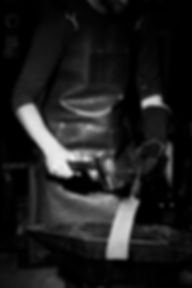Full Tang vs Hidden Tang
- Aidan Mackinnon
- Oct 30, 2017
- 2 min read
MYTH - Good Kitchen Knives Must Have A Full Tang

This probably qualifies as a lie, in regards to the kitchen knives for sure.
First of all to catch people up on the terminology, the tang is the piece of steel that runs into the handle.
On a full Tang knife you can see the steel throughout the handle, with wooden scales pinned or riveted to the side to hold it on. A hidden tang has the steel embedded into the handle material and all you see is the handle itself. There are minor variations to this design, but the basic model is that.
Historically there were very few full tang blades for various reasons, all of them justifiable. After all it's extra metal to waste, extra work to do and there are sanitary concerns with full tangs too.
Let's take swords, Kukris and famous American Bowie knives for example. All were designed as a fighting implements and hard use blades. Not only did they have to cut through the flesh, tendons and bones, but also through rough leather, wood and armour. Now if these tools could do fine without the full tang why would a kitchen knife designed to cut very delicate and soft ingredients would need all the extra strength of the full tang?
The truth is that knife makers would have abandoned hidden tang knives if they did not perform as well as full tang a long time ago. All you need is a reasonably strong blade/handle composition to withstand the intended use and have plenty of reserve just in case.
If you like full tang knives, that's your choice and that's what really matters.
However, there is absolutely no advantage or benefit in having a full tang kitchen knife over hidden tang.
